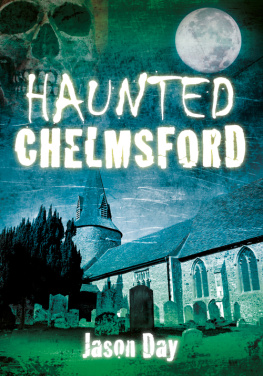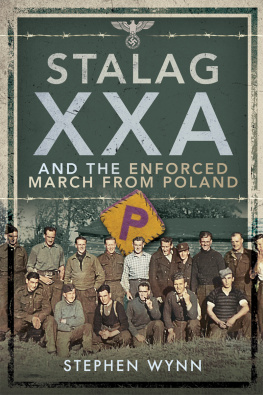Struggle and Suffrage in Chelmsford
Struggle and Suffrage in Chelmsford
Womens Lives and the Fight for Equality
Stephen Wynn
First published in Great Britain in 2019 by
Pen & Sword History
An imprint of
Pen & Sword Books Limited
Yorkshire - Philadelphia
Copyright Stephen Wynn, 2019
ISBN 978 1 52671 6 064
eISBN 978 1 52671 6 088
Mobi ISBN 978 1 52671 6 071
The right of Stephen Wynn to be identified as Author of this work has been
asserted by him in accordance with the Copyright, Designs and Patents Act 1988.
A CIP catalogue record for this book is available from the British Library
All rights reserved. No part of this book may be reproduced or
transmitted in any form or by any means, electronic or mechanical
including photocopying, recording or by any information storage and
retrieval system, without permission from the Publisher in writing.
Pen & Sword Books Limited incorporates the imprints of Atlas,
Archaeology, Aviation, Discovery, Family History, Fiction, History, Maritime,
Military, Military Classics, Politics, Select, Transport, True Crime, Air World,
Frontline Publishing, Leo Cooper, Remember When, Seaforth Publishing,
The Praetorian Press, Wharncliffe Local History, Wharncliffe Transport,
Wharncliffe True Crime and White Owl.
For a complete list of Pen & Sword titles please contact
PEN & SWORD BOOKS LIMITED
47 Church Street, Barnsley, South Yorkshire S70 2AS, United Kingdom
E-mail:
Website: www.pen-and-sword.co.uk
Or
PEN AND SWORD BOOKS
1950 Lawrence Rd, Havertown, PA 19083, USA
E-mail:
Website: www.penandswordbooks.com
Introduction
The Chelmsford of 2017 has city status, an honour bestowed on upon it on 14 March 2012. Before that it was the county town of Essex and had been since around 1218. Chelmsford officially came in to being as a town in 1199 when a Royal Charter was granted for the holding of a market. The town had been known as Celmeresford since the time of the Domesday Book in 1066, and this was only changed to Chelmsford in 1189.
Archaeological finds in the area have provided evidence for sites dating back to Neolithic times, as well as the late Bronze Age, and the town was also home to the Romans in about AD 60. The building of a fort suggests that the town, then called Caesaromagus, meaning the market place of Caesar, was a place of some importance. Indeed, it was situated at about the halfway point of the Roman road (todays A12) which ran from Londinium (London) to Camulodonum (Colchester).
After the Peasants Revolt of 1381 was put down in London by King Richard ll, who at the time was only 14 years of age, he and his entourage moved to Chelmsford for a week or so in July 1381, which in effect made the town the nations capital.
Over the years the town kept its royal connections. In 1517, on the site where todays New Hall School stands, King Henry Vlll acquired the estate and called it Beaulieu, and for many years it was home to his daughter, Mary Tudor. In later years it came in to the possession of Queen Elizabeth l and Oliver Cromwell.
During the Second World War numerous bombing raids by the German Luftwaffe saw a number of townspeople killed, many of them women.
This book considers the lives of the women of Chelmsford during the period 18501950. This particular period saw hugeadvancements for women, although they didnt stop there, with things gradually improving through to today. In the main it will look at their achievements and how many of them broke away from the stereotypical, yet also traditional, roles of mother, homemaker and housewife, to become breadwinners and achievers in their own right.
What did womens lives look like in 1850? For women of the lower classes, the best that could be hoped for in life was possibly marriage, as with it came a degree of security, although that is not to say that life for them was easy. For those who didnt acquire such status, all they had to look forward to was uncertainty, poverty, destitution, starvation and possibly even prostitution, the latter just as a means of survival.
Education wasnt widespread in 1850. In fact, literacy amongst the lower classes was still not seen as important, even into the early years of the twentieth century. After all, why teach a woman who was either going to spend her life in service, or as a wife and mother, to read and write?
The book will look at the working roles that were available to women and the wages they could expect to earn for their endeavours. For those who worked, which in most cases meant the young and those who werent married, there was a limited number of roles available. Domestic service; working as a cook or servant; in a factory, where conditions were often harsh, hours were long and laborious and the pay wasnt anything to shout about. For others their working life might have been spent behind the bar of an inn, serving drunks and down and outs.
For women from the better classes of society who didnt marry, their expectations were somewhat higher. A teacher in a primary school, maybe, a nurse, private nanny, a shop assistant. All of which would have certainly come with better working environments than those from lower classes had to endure.
By 1950, the world was an entirely different place. Life had changed drastically for women, with their expectations about life and what they wanted from it, much greater than they had been 100 years earlier. The First World War had seen a massive change for women throughout society in general, and twenty-seven years later there would be more change and upheaval in the aftermath of the Second World War.
CHAPTER ONE
Womens Health
The Contagious Diseases Act 1864 was brought in to deal with the growing number of cases of members of the armed forces contracting venereal diseases through their contact with prostitutes. Official figures show that by 1864, one out of every three cases of a soldier reporting sick was related to a venereal disease from a prostitute. The problems were much worse in and around garrison towns where there were large numbers of young soldiers with time on their hands and money to spend, especially on Friday and Saturday nights. The problem became so bad that the original Act required further amendments in 1866 and 1869.
The original 1864 Act allowed police to arrest women they suspected of working as prostitutes, but only in certain towns that had naval ports or were established Army garrison towns. By 1869 however, the number of specified towns had risen to eighteen. Once arrested, the women were then subjected to compulsory examinations, to see if they were infected with any form of venereal disease. If they were, they could be confined in what was called a lock hospital, which was simply a medical facility that specialised in the treatment of venereal diseases. There they would remain until their treatment was complete and they were free of the disease. The original Act of 1864 allowed for women to be detained for up to three months, but by 1869, lessons had been learnt, and the period of time a woman could be detained had been increased to a year. A problem with these lock hospitals, or rather the voluntary ones, was that there wasnt enough of them. In 1882, it was estimated that there were 402 beds for female patients, but only 232 of these were available for use at any given time. The only other option for women who believed they may have contracted a venereal disease was to take themselves off to their local workhouse infirmary.

















